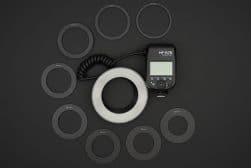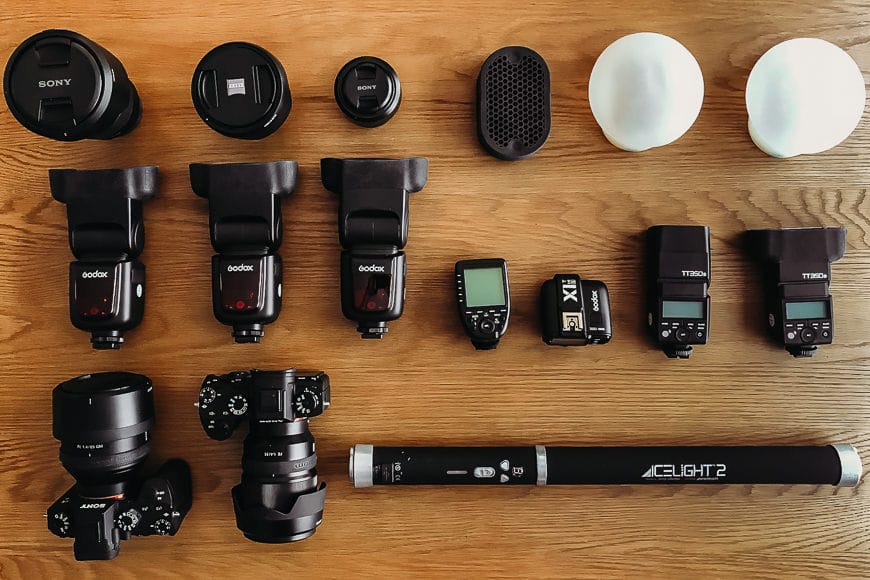
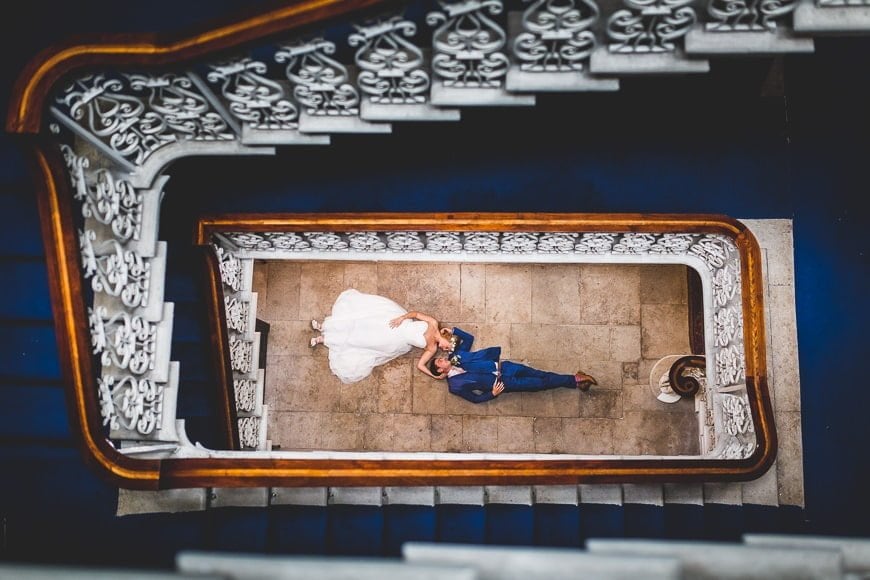
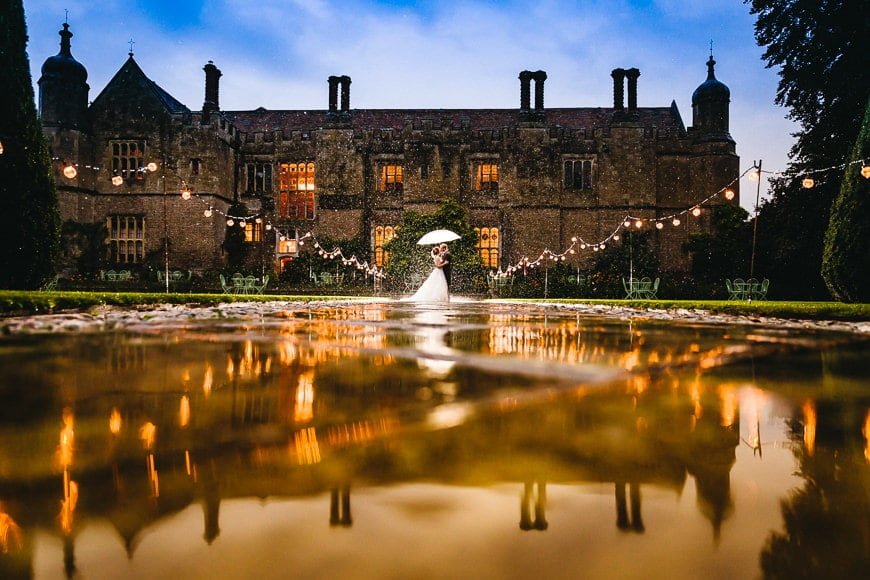

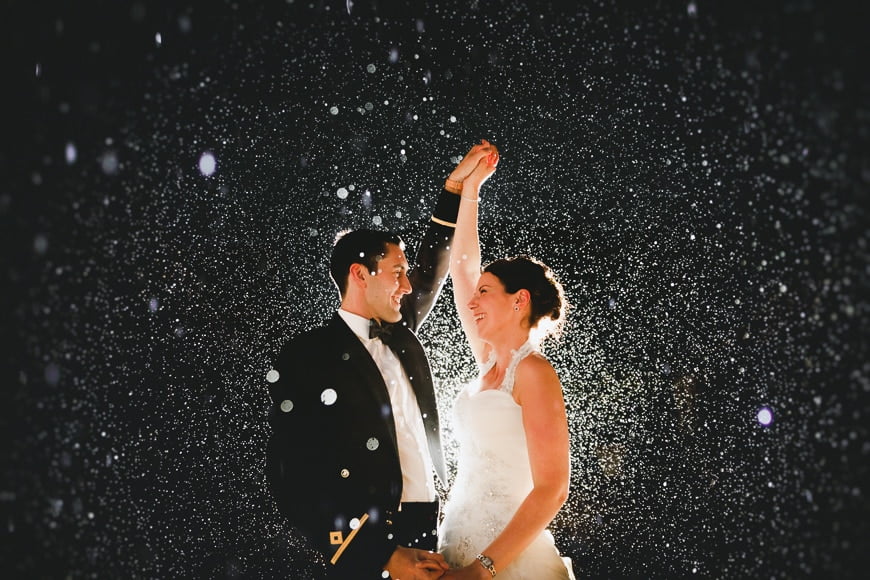
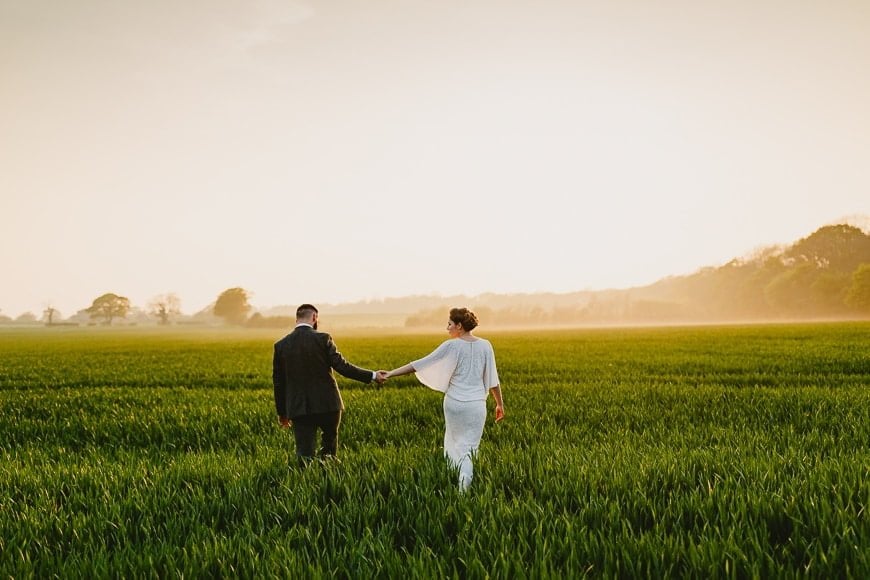
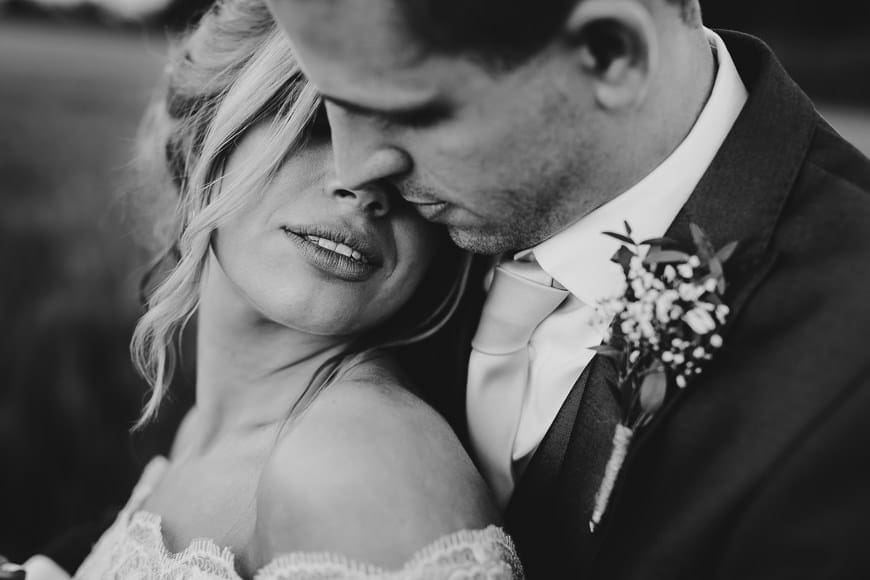


Andy Davison
Wedding | Last Updated: April 4, 2024
Hi! I’m Andy Davison, a full-time professional wedding and sometimes lifestyle photographer based very close to the beautiful city of Norwich in the East of England. I’m blown away to be featured here alongside so many incredibly talented and inspirational photographers.
I moved to Norwich with my family in 2012 at the end of a long and totally non-photography-related career as an officer in the Royal Air Force (RAF). I love coffee, indie music, warm-flat beer, spicy hot food, ‘watching’ any sport and only ‘participating’ in ones where gravity or mother nature does most of the work – so mainly surfing, snowboarding and skiing.
With no idea what to do with my life at the age of 40, I decided to try to turn a passionate hobby into a living and tried my hand at pretty much every genre of photography. I quickly came to realize that my passion wasn’t just photography, it was people. If I raise my camera to my eye and don’t have a person in the frame, something is lost for me.
After shooting a few weddings for free in 2013, and finding a few enquiries coming in from guests who’d seen me work and liked my images from those weddings, I decided that wedding photography might just be the perfect fit for me. After a dozen weddings as a second-shooter, and with the beginnings of a portfolio and a handful of bookings, I shot my first solo wedding in September 2013 and stopped looking for other jobs; I now had my second career.
I aim to shoot 25-30 local weddings per year. I left the RAF to settle down with my wife and children, so I prefer to remain relatively local and only take enough bookings on to pay the bills and support the lifestyle we enjoy. So far I’ve been hugely fortunate to comfortably book the number of weddings that I want and still work in some stunning venues with many amazing couples.
I’m not sure we ever reach a point where we can define our style as I think we constantly evolve as the years pass and we try to master our art. I think most descriptions of wedding photography style have become clichéd. Like many, I consider myself to be largely a candid wedding photographer, but I also like to get a little creative with portraits and I enjoy delivering some polished couple shots worthy of framing. A cliché again, but I’d like to think that my style is contemporary but not so styled that it will date. I like fairly punchy colours and clean edits.
I’m currently shooting weddings with Sony and Godox gear. Having used Canon since about 2003, I started my wedding photography career using 2 x Canon 5D Mark III cameras with a mix of L series lenses. I’ve always favoured prime lenses, so I largely used the Canon EF 85mm f/1.2L
and Canon 35mm f/1.4 L II
lenses.
I was an early adopter of the Canon 5D Mark IV when it came along in late 2016 and immediately hit problems. One camera completely failed on me and another had to be returned with a faulty power supply. While I love a lot about the camera, my previously unshakable confidence in Canon was rocked and I started to become more aware of what other brands had to offer.
In mid-2017, I shot alongside an early adopter of the Sony a9, a camera that had already caught my eye as potentially a great wedding photography tool. I am completely agnostic when it comes to camera brands. I only want to use the best equipment available to deliver the best results in my genre of photography, so I was very impressed with the a9
and what it offered.
Specifically, I loved the smaller size, the eye and face tracking, focus points to the edge of the frame, the constant live-view, black-out free shooting, silent shutter, tilt-screen and in-built image stabilization. With a massive jump in battery-life and Sony Professional services coming on line, I really couldn’t see many obstacles to switching brands (other than the financial ones!). [Ed – see Sony a9 review]
During the course of the second half of the 2017 wedding season I switched completely to the Sony a9 and Sony native lenses. I made the move slowly to spread the cost and to make sure that I was completely comfortable on the new system before relying solely on it at paid shoots. I’m glad I did as it did take some time to be fully at ease with the mirrorless system and of course the infamous Sony menus!
Before I move on to my specific equipment, I have to say that I absolutely love shooting with the Sony a9. The silent shooting has already allowed me to capture moments that I’d otherwise have missed, particularly during church wedding ceremonies, and the AF system and eye/face detection has allowed me to shoot with a completely new level of confidence and freedom.
Seeing the exposure before you take the shot saves a lot of time in post and having AF points right to the corners of the frame allows for so much more compositional freedom on the fly. Game-changer is an over-used phrase but the a9 has had a massive impact on my photography.
Of course, there are bound to be down-sides — no camera is perfect. I’d say the things I miss from my Canon cameras are physical build quality (my Sony a9s are looking scuffed after half a season), colours (this is bound to attract hate from Sony fans but I firmly believe that the Canon colours are better than Sony and certainly easier to edit) and the flash integration is not as mature as Canon’s – the mechanical shutter/flash combination on the a9
, particularly when working low-light with very few AF-assist options is a real challenge for me after working with an SLR.
So, on to the gear specifics. I’m shooting 2 Sony a9 cameras with a Sony Zeiss 35mm f/1.4 Distagon
lens on one and a Sony 85mm f/1.4 GM
lens on the other. This combination covers about 80% of the day for me with the 35mm taking the majority of the work. Working with such an incredible AF system as the Sony a9
it seemed silly to consider using adapted lenses.
It would of course have been cheaper to keep hold of my treasured Canon L lenses and adapt them but the Sony a9 is an expensive camera with its AF system being its single biggest selling point. Hampering it with an adaptor seemed counter-intuitive to me, hence all my lenses are Sony.
I did only recently finally try the Sigma MC-11 EF adaptor on my Sony a9
with a Canon 135mm f/2 L
lens (my favourite Canon lens and one that I simply couldn’t sell last year!) and I found the AF to be extremely hit and miss. I’ve subsequently returned the Sigma MC-11
adaptor and sold my Canon 135mm f/2 L
lens.
The Sony Zeiss 35mm f/1.4 Distagon lens is a great workhorse of a lens. I absolutely loved the Canon 35mm f/4 L II
lens but the Sony lens is every bit as good. Having the flexibility to shoot at wide apertures in mid-day light is another bonus of the Sony A9 – with 1/32,000 sec possible, you’re able to work in bright light with a little bit more flexibly.
Similarly, the Sony 85mm f/1.4 GM is a beast of a lens. Although it makes a mockery of the idea of downsizing to mirrorless (and there are some much lighter 85mm options for the Sony FE mount) it is worth the weight and size. Image quality is more than a match for my old Canon 85mm f/1.2 L
(although I do miss some of the beautiful flare) and autofocus speed on a different level altogether.
The Sony FE 55mm f/1.8 ZA Carl Zeiss Sonnar is an incredible little lens. A fraction of the size of the 35 and 85 lenses, it is a joy to hold on the camera and deliver wonderfully sharp images. I’ve heard some criticize this lens for a lack of character, but I’ve not seen that.
Bang for buck it’s the best lens I own and the one I reach for when I want to get in close during prep or portraits without fear of distortion and without pointing the larger very indiscreet 85mm in people’s faces. With it being so small and light, I’ve used it a lot for family life and it’s constantly amazed me at the IQ possible at this size, weight and price-point. [Ed – see Sony lens reviews here]
My workhorse back-up lens which really only sees use for wide establishing shots, speeches (when I don’t want to zoom with my feet and get in peoples’ way) and dance-floor, is the Sony 24-70mm f/2.8 GM.
Like the 85mm, it’s a large and heavy lens that feels a little imbalanced on the a9 body. But, again, it absolutely delivers on AF speed and image quality. It is absolutely tack sharp to the corners and, I believe, more than a match for the much-acclaimed Canon 24-70mm f/2.8 L II
lens. For anyone reading and who is considering moving to Sony for wedding photography, there is certainly nothing to fear in terms of the range and quality of lenses.
While Sony is quickly adding to their lens line up, they’re now well past the point where you could wish for much more. Maybe a native Sony 135 would be nice and perhaps a lightweight Sony 35mm but that’s really just being picky.
My final lens is really a dance-floor only lens, and it’s the Zeiss Batis 18mm f/2.8. Not a cheap lens but the very best prime for the A9 at this focal length and an absolute stunner of a lens. Incredibly well built, lightweight, fast to focus and extremely sharp, it’s perfect for roaming a dance-floor shooting single-handed getting the crazy wide action. It’s probably a luxury when I already have the 24-70, but the 18mm is a wonderful option to work with at the end of a long wedding day.
I carry a Westcott Icelight II around, but it rarely leaves my bag if I’m honest. I prefer to use ambient light until the sun goes down and then move to flash.
My flash system is entirely Godox-based. Godox has been a revelation to me. The Canon EX-RT system was incredibly well-built and reliable but also hugely expensive. While the move to Sony has certainly not been cost-neutral, it was a real pleasure to find a reliable and well-thought out flash system for a fraction of the Canon offering.
The Godox system enjoys incredible interoperability and, with each flash coming with built in transceivers, it is amazingly flexible. The Godox X1T (S) transmitter recently had proper AF assist added to it via a firmware update which should make the dark dance-floor a little less of a challenge this year. Hopefully Godox will roll out the same capability to their flashes and triggers in due course.
The new Godox XPro is an exceptional transmitter with the ability to view and quickly adjust the mode, power and zoom of 5 flash groups as well as the TCM function which essentially allows you to fire off remote flashes in TTL and immediately convert that to manual power settings. Incredibly useful for getting multiple flashes dialed into the ballpark power settings on the fly.
The tiny TT350 flashes are also transceivers and work great as on-camera triggers with fill flash. They work off 2 x AA batteries so are fairly low on power and recycle time but ideal for carrying in the shoulder bag and feel well-balanced on the quite flimsy Sony a9
hot-shoe (which has just been replaced under a product recall).
The Godox V850 II uses a lithium rechargeable battery which ensures a fast recycle time and more than enough charge to last a long dark wedding day – the real bonus is much fewer AA batteries in the bag.
Finally, I’m adding a Godox AD200 to the mix this year. It’s about 3 or 4 times the power of a standard speedlight but not much larger. For the price, I think it’ll be a great addition to my flash line-up and offer me a little extra power when I need it. The bonus is that it’ll take the MagMod Grip
so my modifiers will also work on it.
I do use the MagMod kit quite a lot. I’m sure that it’s rightly becoming the industry standard for wedding photographers, but I love the simplicity and flexibility of the whole system and that it’s built to last. I’ve only really started to explore what it is capable of and intend to try to get more from the creative gels this year having been inspired by the MagMod community.
I do have a Think Tank International V3 roller-bag from my Canon days, but I’m now able to carry most of my equipment in the superb Peak Design Everyday Messenger 15
. For 90% of the day, the Everyday Messenger 15
is enough for me. The larger bag stays in the car until the evening when I need more flashes and stands. [Ed – see camera bag reviews]
I mix and match camera straps which include a Holdfast Money Maker, Black Rapid strap
and Spider Holster
.
On top of the ‘conventional’ gear below, my bag is topped up with random glass objects and lights to shoot through, some snack bars, water (lots), mints, eye-drops and deodorant.
My Kit:
Cameras:
Sony a9 (x2)
Lenses:
Sony Zeiss 35mm f/1.4 Distagon
Sony 85mm f/1.4 GM
Sony FE 55mm f/1.8 ZA Carl Zeiss Sonnar
Sony FE 24-70mm f/2.8 GM
Lights:
Godox X1T (S) Transmitter
Godox XPro (S) Transmitter
Godox TT350 (S) x 2
Godox V850 II (S) x 3
Godox AD200 (on order!)
MagMod Grids, Gels and Sphere
Westcott Icelight 2
Bags:
Think Tank International V3 and Peak Design Everyday Messenger 15
Straps/Carriage:
Holdfast Money Maker, Black Rapid Strap
and Spider Holster

Check out these 8 essential tools to help you succeed as a professional photographer.
Includes limited-time discounts.









